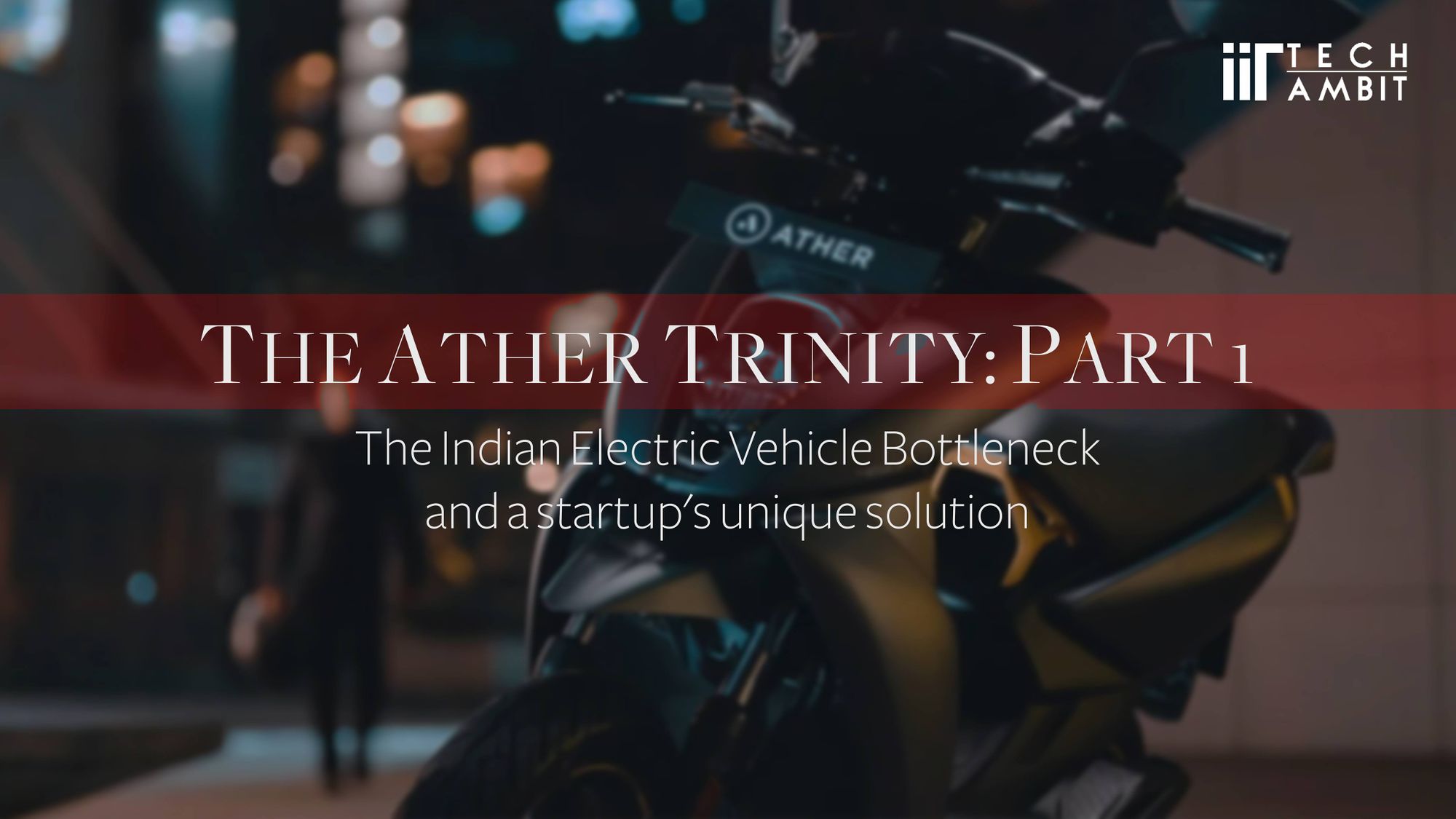We all know where the future for the automotive industry lies. Reduced emissions, lesser dependency on fossil fuels, much better performance than the traditional IC (Internal Combustion) Engines place Electric Vehicles (EVs) at a much better position to be adopted as a transportation alternative for the future. Most countries are pursuing this goal seriously - The Netherlands and Norway want to ban the sale of ICE vehicles in favour of EVs by 2025. The UK and France want to phase out ICE vehicles by 2040. The UK has said it won’t even allow vehicles running on traditional fuel to ply on its roads from 2050.
India too has been very proactive with regards to phasing out ICE vehicles in favour of EVs. The Government has set the goal of only having Electric Vehicles sold in the Indian market by 2030, as part of its commitment to reduce greenhouse gas emissions under the Paris Agreement on climate change, and to reduce spending on oil imports, which, according to one estimate, could double to an annual $300 billion by that year if spending is not reduced. While it is a very ambitious move and a step in the right direction, several industry leaders find this to be an extreme step.
The target should be a “little more moderate...," said Pawan Goenka, managing director of Mahindra, which makes electric cars such as the E20 and e-Verito. India should move a lot more aggressively than others, but be “more moderate than being 100% electric vehicles by 2030", he said.
Amidst all the second thoughts about the state of the industry in India, there is one bright spot that might prove to be an indication of better things to come in the industry - a startup named Ather Energy. But first, let us understand why an electric vehicle is much more than just an environmentally sound choice, and what are the pre existing problems that necessitate the presence of startups like Ather.

The Electric Vehicle on an Indian road - a strategic benefit
There are reasons for the Government to aggressively pursue the electric vehicle utopia. The environmental benefits of Electric Vehicles are very well known and they make EVs a very viable solution for India's pollution problem, which has been majorly contributed to by automobile related emissions. There are scientific benefits as well - EVs are around 3-5 times more efficient than IC engines in utilising energy. EVs can deliver higher torque at low speeds, as a result they deliver far better performance than ICE Vehicles on tricky terrains.
Even considering these significant improvements in several parameters, the fact remains that the Indian EV industry and infrastructure is not yet capable of high end R&D while also mass producing EVs at such a level that they can replace the ICE Vehicle by 2030. Any unprecedented move that is not gradual may upset infant and struggling EV manufacturers across India and may end up reducing the appeal of the market for EVs in India. Then why such an aggressive stance?
India has currently the fourth largest automotive industry in the world. The automotive industry contributes over 45% to the manufacturing sector of the GDP. The automotive industry is a driver of growth as it has a strong multiplier effect and has deep forward and backward linkages with the rest of the industry in transportation and logistics. India has one of the cheapest skilled labour forces in the world, and that could make India a global provider for clean mobility solutions and induce a much needed spurt in exports.
Couple that with the fact that India's current expenditure on crude oil imports (for 2014-15, $112bn) will be much reduced when EVs pickup steam as the dependency on fossil fuel imports reduce - and we begin to see the major economic advantage that electric vehicles entail, as well as the energy solution they provide. A solid EV industry in place would improve India’s trade balance and also relieve it of its National Fuel Security concerns - a much needed economic and strategic relief.
Problems in the Electric Vehicle Market and Industry:
Despite the ambitions of the government, hurdles remain. The biggest hurdle in the EV market is the lack of demand and a lack of consumer awareness about the benefits of EVs both in terms of personal economy and environmental effects. In India, initially most of the electric vehicles that were developed and sold had poor consistency, low life, very high cost of the battery and in turn high cost of the vehicle. The only selling point for these expensive vehicles was that these are environmentally a much better choice, which isn’t exactly a major selling point by itself.
The Battery issue:
On the supply side too, there are several problems. Battery cells account for 55-70% of an EV’s price, and are very expensive. Ideally such a problem can be dealt with a two pronged approach: 1. Designing of low cost batteries via R&D efforts to find cheaper alternative materials which can be found in abundance inside our country, and 2. Localising the supply chain and bringing the manufacturing process inside our country. India currently lacks in both these fields. The preferred choice of batteries are Lithium(Li) ion batteries which have very high energy density and low discharge rate which makes them able to deliver sustained high performance.
India here faces a two fold problem: 1. There has been no large enough investment in mining lithium reserves in the country that can provide for its mass mobile electrification plan, 2. This lack of investment and in natural reserves has caused India to procure these batteries at very high import rates, and lack of manufacturing inside the country has resulted in absence of major supply chains and any concerted efforts towards designing cheaper batteries. Worse still, overdependence on imports may further damage the very trade balance that India seeks to restore by making a shift to Electric Vehicles.

Another major problem in the EV industry is the lack of charging infrastructure. India was reported to have 650 charging stations in 2018, whereas China had over 456K charging points in the same year. In addition to charging points, the lack of private parking spaces is also noted as a hindrance for electric vehicles adoption, and the lack of affordable renewable energy means charging EVs is putting a toll on the already stressed coal-powered electricity grid. According to auto giant Maruti Suzuki’s research, 60% of Indian customers don’t have their own parking space. “There is no way they can charge the vehicle, therefore they won’t adopt it,” said C V Raman, senior executive director (engineering) of Maruti Suzuki India.
Government EV Policy flip-flops:
In terms of Government EV policy, while the overall outlook of the Government towards adoption of electric vehicles has been positive and even ambitious at times, their policy has at times been shaky.
India unveiled the 'National Electric Mobility Mission Plan 2020' in 2013 to address the issues of National energy security, vehicular pollution and growth of domestic manufacturing capabilities. The NEMMP 2020 proposes solutions to several of the problems mentioned above, like boosting R&D capabilities in the country, developing manufacturing units and localised supply chains, creating necessary critical infrastructure to facilitate the operation of these vehicles, and also spurring demand amongst the public.

There have been positive steps in the recent past, like proposing to increase customs duty on imports of electric vehicles across all relevant categories, and slashing GST rates on Electric Vehicles from 12 percent to 5 percent. As a part of its NEMMP 2020 roadmap, the government has run the “Faster Adoption and Manufacturing of Electric vehicles” Scheme in two phases, 2015-19 and 2019-22.
The second phase of this scheme featured a much higher government spending(10,000 crore Rupees as opposed to 895 crore Rupees in the first phase), more emphasis on localisation and a capping of the extent of subsidy on EV sales to 20% of the cost of vehicles (40% for buses). Under this scheme the government has floated tenders for developing charging infrastructure, and has subsidised the sales of electric vehicles that will be used for commercial purposes. This is in direct contrast to the FAME-I scheme, where the government had subsidised the sales of all electric vehicles, regardless of personal or commercial use.
However, this move has come under a lot of criticism from industry leaders, who are saying that the EV industry in India is now learning to operate without government assistance, as about only 10% of EVs sold under the FAME-I scheme were employed in commercial uses. A view that is held by a majority of automobile industry players, is that the government has not shown complete commitment even though it is moving in the right direction.
Ather Energy: Paving the way for the Electric Vehicle Industry in India

A major reason for the EV revolution getting delayed in India is because major incumbent players in the automobile industry are iterating the same processes and are going ahead with the same outlook with which they are used to in the traditional ICE Vehicle industry. The automotive industry in India, as in the rest of the world, is a very well established industry that already records still growing profits from the sale of traditional ICE vehicles. Due to the policy flip flops of the Government, lack of charging infrastructure, lack of consumer awareness, and a host of other reasons, these players are finding it hard to redirect their swelling profits to the majorly unstable Indian EV industry. This makes the relatively fresher auto startups more well suited to take up the challenge of India’s vehicle electrification.
Here is where Ather Energy enters the scene.
Founded in 2013 by IIT Madras alumni Tarun Mehta and Swapnil Jain, this very special startup has offered unique solutions and insights to solve the problems surrounding the EV industry: be it the market appeal of the product, its parameters against its market price, requisite infrastructure and the problem of range anxiety. Ather’s speciality is not just that it brings a better product to the market, it also brings an ecosystem for that product, a model for other startups and players to learn from in this field, and a much needed sheen required to sell any new product.
Ather Energy develops all of their technology in house, for example: Battery Management System (AKA the brain of the vehicle) built entirely by the people at Ather, that helps monitor all the cells, voltage, current, load, and temperature. It helps track the performance of the battery pack on a daily basis, and it has inbuilt algorithms that learn continuously about the usage and performance of its battery packs. The software of the BMS can be modified to improve battery life and efficiency by algorithms that learn from one’s driving style and battery usage trends. To add to their unorthodox business model that hinges around hardcore engineering, Ather has also come up with their own charging network, and a facilitating app for the same - Ather Grid. As a part of this project, Ather has already established several charging stations in Bangalore and Chennai.
Even though a very new player, Ather energy has definitely come up with a very solid plan to make electric vehicles mainstream. They have countless other innovations to boast of - be it the Ather Energy app which leverages IoT to create their own remote diagnostics technology and software upgrade capabilities, or the Ather One ‘service on the go’(an all-in-one servicing solution that covers the cost of fuel (the electricity bill), maintenance, consumables, labour charge, and roadside assistance — all for a reasonable INR 700 per month).
All of these innovations get this point across: that if at all the electric vehicle industry is to explode someday in India, it has to be through hard and smart engineering, futuristic innovation aimed at capturing the consumer's mind, and by completely rethinking the structure and integration of the automobile industry.


